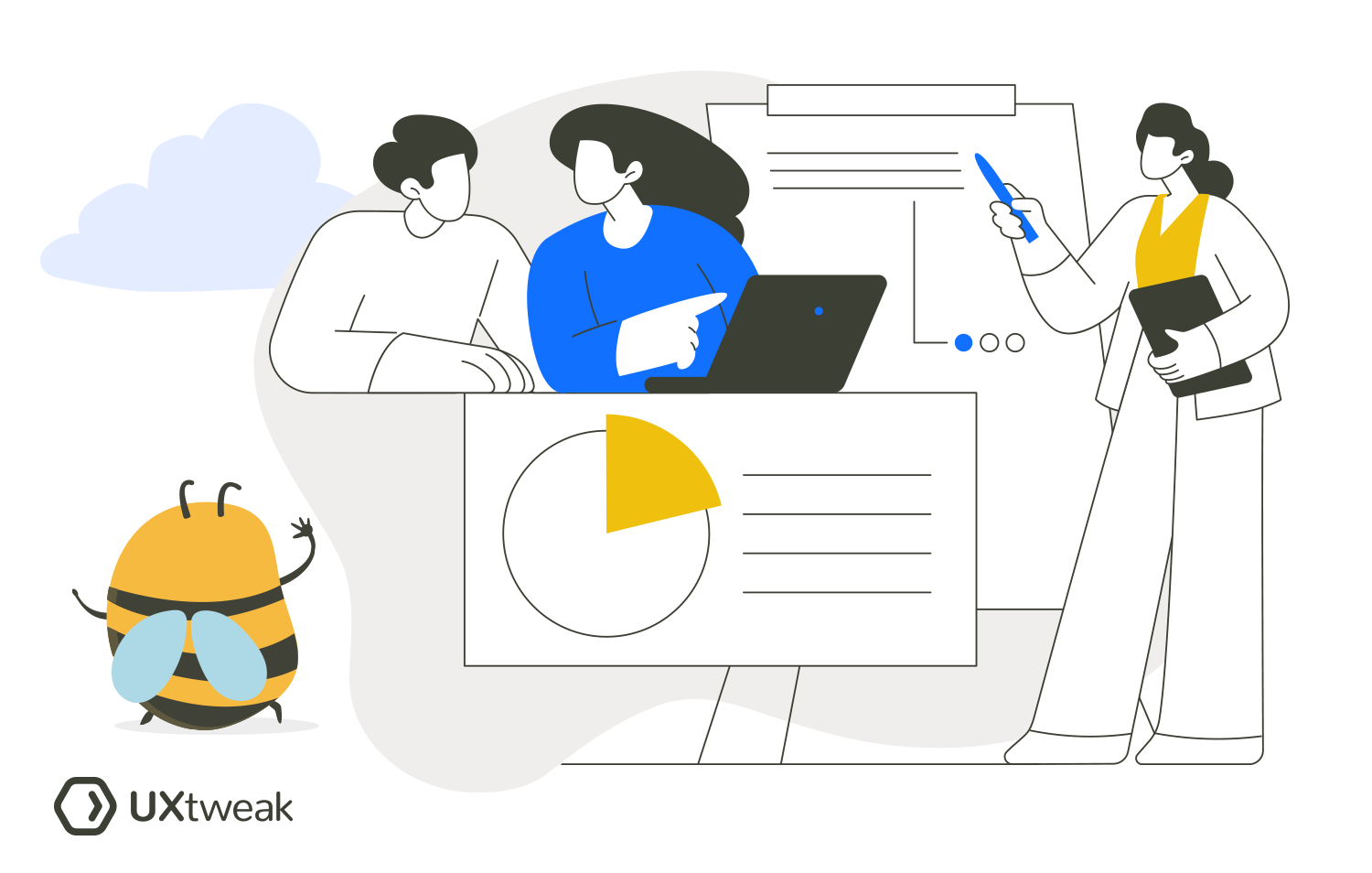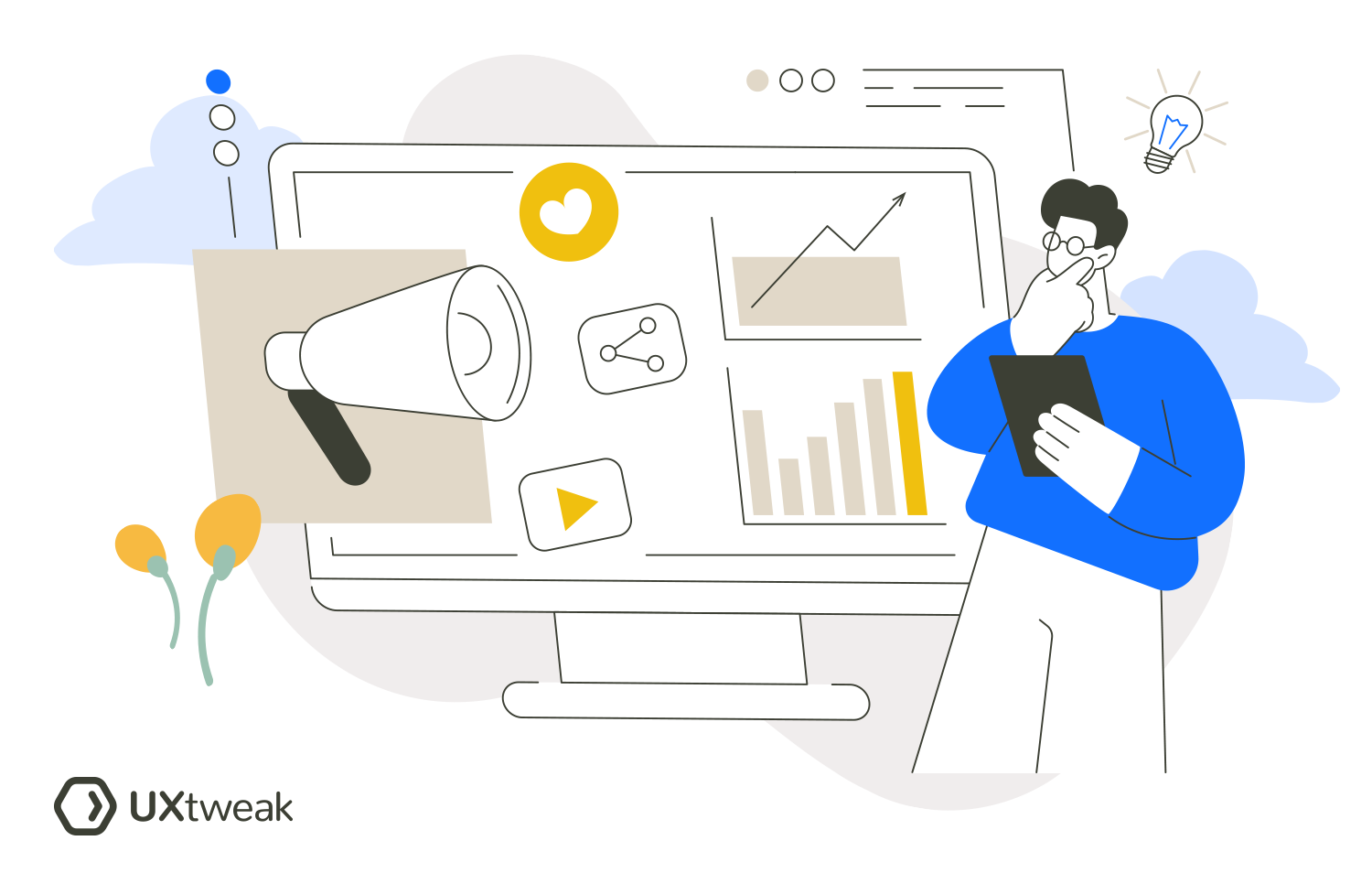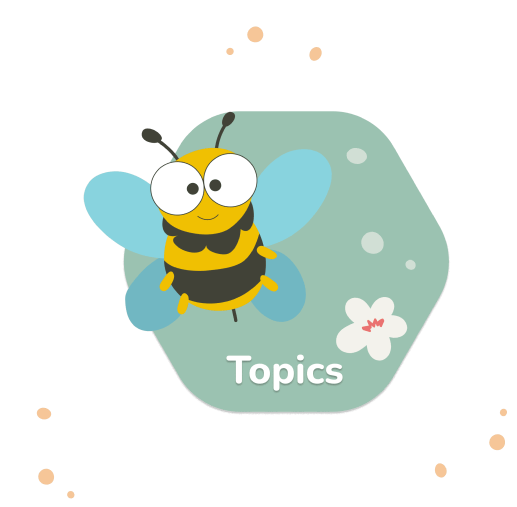Product discovery is the foundation of any successful product that users fall in love with. But what if we tell you that product discovery doesn’t have to stop at the initial stages of the product development process? Continuous product discovery is the recently-introduced approach to making product discovery a part of your daily processes and collecting ongoing feedback from your customers or future users.
Let’s take a look at how it can help your organization become more user-centered, why it’s actually worth it and how you can introduce it to your company culture in just a couple of steps!
Key Takeaways:
➡️ Continuous product discovery implies ongoing user research with the goal of aligning the product with its customers’ needs.
❗ It is embedded into the daily work of product teams, before, during and after the launch.
✅Continuous product discovery offers several benefits including reduced risks, faster innovations and better alignment with customers’ needs.
🧠 You can introduce continuous product discovery in your organization by following a couple of simple steps and altering the mindset and culture to being more customer-centered.
💡 There are tons of online product discovery and research tools that can help you make this process continuous. One of them is UXtweak.
🐝 You can register for your UXtweak account and start your continuous product discovery journey today.
What is continuous product discovery?

Continuous product discovery is a specific approach to product development that implies ongoing user research with the goal of aligning the product with its customers’ needs.
Following the traditional way of conducting product discovery at the beginning of the product development process, continuous product discovery adds to it by embedding it into the daily work of product teams, before, during and after the launch.
Why is continuous product discovery important?
Continuous product discovery holds several key benefits:
- Reduced risks: by continuously validating your assumptions and concepts through user testing your team is reducing the risk of making a product that no one needs, as well as making sure that you’re not going to develop something that is not usable or functional. Continuous product discovery encourages constant customer feedback collection and allows you to make data-backed decisions that are based on your users’ needs.
- Faster innovations: continuous discovery and regular feedback usually leads to quicker more pivotal changes and encourages constant generation of innovative solutions. The more you discover, the more you understand your customers and their needs. This understanding will give you space for innovative improvements and fresh ideas.
- Better alignment: one of the biggest advantages of continuous product discovery is that it helps teams to stay aligned with ever-changing customers’ needs as well as business goals. Your users are constantly evolving and so should your product. Continuous discovery gives you insights to inspire this evolution process.
It’s important to mention that, although continuous product discovery is a highly beneficial and important approach to introduce in the organization, it can also be quite challenging to follow, especially for smaller teams.
Continuous product discovery process requires a cultural shift within an organization. Therefore, it can take some time to adapt to a new mindset for some teams. Additionally, it can be quite resource intensive, as continuous testing, research, feedback collection and iteration requires a significant amount of time and effort.
However, these are just a few details to be aware of. Continuous product discovery is undoubtedly worth every penny and minute spent on it, and you can be sure that this approach will be effective when done right.
How to do continuous product discovery?

In the previous chapter of this guide we’ve already explained how to get started with product discovery. Now, let’s figure out how to make it continuous and make sure it stays as part of your company culture.
Here’s a step-by-step process that will help you transition your company to a continuous product discovery model:
1. Secure leadership buy-in
Starting with continuous product discovery is not just about following the process. You’ll need to embed a new way of thinking into the organization, which means you’ll have to start with convincing your stakeholders that it’s worth it.
Come up with the strategy on how you’ll convince them about the continuous product discovery importance and explain the benefits this approach will bring to the organization. You’ll need to estimate the time and resources that are going to be needed and gain stakeholders’ approval of the whole process.
Be convincing and explain the importance of such innovation. Emphasize what positive changes it will bring and point out how it can solve the current problems and pain points related to your product.
2. Align with business goals
Discover how continuous product discovery will help you align with long-term overall business objectives.
These can be, for example:
- Promoting customer-centricity
- Providing data-driven insights
- Enhancing collaboration between teams
- Driving innovation
Additionally, define the metrics you’ll use to measure the impact of the continuous discovery process.
Examples of such metrics are:
- Customer Satisfaction (CSAT): the level of customer satisfaction with your product or the specific changes you’ve made
- Net Promoter Score (NPS): willingness to recommend the product to others
- Customer Feedback Volume: the amount of feedback collected through various channels
- Return on Investment (ROI): financial return on your continuous product discovery activities
- Time to Insight: how quickly insights are generated and integrated
- Hypothesis Validation Rate: the percentage of tested hypotheses that are validated or invalidated
- Market Position: shifts in market positioning or competitiveness as the result of your discovery activities
3. Assign roles
Define how the continuous product discovery process will be implemented and who is going to be in charge of it. As mentioned before, this process needs a significant amount of time and resources so you will probably need a dedicated team of professionals that will continuously conduct research, analyze, present and implement insights.
Make sure this is not just one person working on continuous product discovery.
You need different roles to be represented in order for the process to be effective. Ideally, you want to have at least 3 team members: product manager, designer and engineer. The product manager will ensure the alignment with product and business goals, designer will assist with UX and usability of your iterations and engineer will make sure your idea can actually be developed.
4. Develop a schedule and methodology
Define a schedule that you will follow in your continuous product discovery process. For example, schedule weekly meetings with customers in your calendar, always at the same time. This way you’ll be able to organize your processes better and manage your time for insights collection, analysis and implementation.
Find out how you’re going to conduct your product discovery every week. Choose the research methods you’ll use. These could be feedback forms, surveys, interviews, weekly usability tests etc.
Here’s what an expert has to say about it:
Define a method for consistently recruiting and engaging with users. There are multiple ways you can do this. For example, by setting up a popup on your website that invites users to share their thoughts on the product while they are using it. Or recruiting people from your customer base via email. Alternatively, you can talk to Sales and ask them to find people who are willing to participate in your research.
5. Maintain a product discovery backlog
A product discovery backlog is a prioritized list of questions, hypotheses, or areas that need further exploration and validation. While a typical development backlog consists of tasks or features to be implemented, a discovery backlog focuses on uncertainties, learning goals, and information needs.
The backlog will serve as an ongoing list of everything that needs to be done, prioritized and researched and will help you keep continuous product discovery processes strategic and organized.
Here are some key components your discovery backlog should include:
- Research questions and hypotheses that need to be validated
- Priority ranking based on urgency, relevance or severity
- Research methods used
- Statuses and key findings
6. Leverage the right discovery tools
To drive successful continuous product discovery you’ll also need the right tools for the job.
First things first, ensure that the tools you’re using facilitate collaboration and make it easy for multiple people to work together on the same project, share insights, collaborate on tasks etc. This goes for all whiteboarding, project management tools and user feedback tools that you’ll use in the process.
Additionally, choose your go-to product discovery tool that will assist you in all research activities. We recommend going for an all-in-one software like UXtweak. This way no matter what kind of research you’ll need to conduct this time, you know that your research software has got you covered!
With UXtweak you can collect feedback through user surveys, conduct prototype usability tests and test already launched products with users, run A/B tests and preference tests, as well as track user behavior.
7. Create a culture of ongoing discovery
The last step here is to introduce continuous product discovery on the culture level in your company. Encourage curiosity and build a mindset that supports continuous learning, communication with customers and improvement. User-centricity should become the top priority for all teams.
Additionally, remember to embrace insights, no matter if they lead to success or not.
Best practices for continuous product discovery

You’re almost set! However, before starting to introduce continuous product discovery in your teams take a look at some of this continuous product discovery best practices that will help you in the process:
- Start with a shared understanding: start introducing continuous product discovery in your teams by creating a shared understanding of what it is, why it’s needed and what changes it will bring. Educate your teams on the principles of continuous discovery and shop how it aligns with your business goals.
- Create deep connections and generate empathy: the key here is to generate a habit of talking to customers and listening to them. Make sure they know how you value their feedback, update them on the changes that are being made based on it and show that you’re committed to improving the product for them. Share customer insights internally with all team members to generate empathy and a general understanding of their problems.
- Experiment and encourage new ideas: validate all your assumptions and hypotheses through experiments and by testing with users. Encourage brainstormings and new crazy ideas inside the team. You never know which one of them will eventually work and become the next great innovation.
- Provide education and training: make sure you don’t just introduce sudden confusing changes out of nowhere. Offer workshops, training, or mentorship to build discovery skills within the team.
- Lead by example: Be available to guide, mentor, and support the team through this transformation. Encourage collaboration and learning, don’t be afraid of mistakes and model the behavior and mindset you want to see in the team.
Wrapping up
As you can see, getting started on product discovery is not exactly an easy or fast process. Altering an organization’s mindset and culture requires a certain amount of time, patience and resources, but in the end it will lead to better products and happier customers, so we can all agree it’s worth it!
Start your continuous product discovery journey with UXtweak! Register for your account and start empathizing with your customers today!





